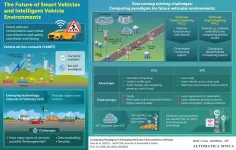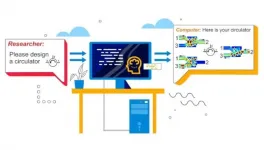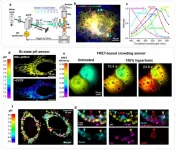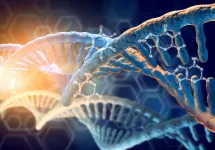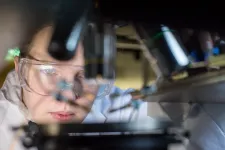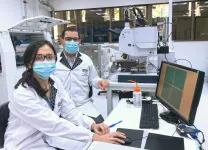(Press-News.org) Central to any technological progress is the enrichment of human life. The internet and wireless connectivity have done that by allowing not only virtually anyone anywhere to connect real time, but by making possible connections between humans and a range of intelligent devices both indoors and outdoors, putting smart cities on the horizon.
One key aspect of realizing smart cities is "smart vehicles", the latest development in intelligent transportation systems (ITS), which involve the integration of communication, mapping, positioning, network, and sensor technologies to ensure cooperative, efficient, intelligent, safe, and economical transportation.
For decades, research on bringing to the streets smart vehicles that operate successfully as part of smart city infrastructure has focused on improving computing paradigms for vehicular network connectivity. Over the past 30 years, vehicular ad-hoc network (VANET), a framework where vehicles self-organize themselves to provide essential services related to road safety, has been in stable development. However, with the advent of 5G networks, VANET is soon giving way to the internet of vehicles (IoV), a novel vehicular environment with more powerful infrastructures.
"VANET was primarily conceived to inform drivers about harsh conditions or emergencies happening nearby. IoV, on the other hand, uses artificial intelligence (AI) technology to provide higher-level services such as information about traffic jams based on user location and personal preferences," explains Dr. Naercio Magaia of the University of Lisbon, Portugal, who works on computer networks and AI, and who with a global team, has recently scoped out computing paradigms that are shaping emerging vehicular environments. Their research is published in IEEE/CAA Journal of Automatica Sinica.
IoV is in the nascent stages and there are certain crucial aspects to consider. For instance, how many different services and devices can be included in an IoV framework? How can we ensure that a user can access information most relevant to them with the least delay? And of course, how to secure a heterogeneous network with a variety of devices?
In their analysis, Dr. Magaia and team find that to naturally solve these problems, broadly, two main types of computing paradigms must be integrated and improved upon: 1) vehicular cloud computing (VCC), which is similar to cloud computing (delivery of computing services, including servers, storage, databases, networking, software, and intelligence, over the internet or "cloud"), except here, the vehicles function as the "cloud" or a "computational cluster"; and 2) vehicular fog computing (VFC), in which the computing entities (nodes) are either distributed as roadside units (RSU)--infrastructures deployed to extend vehicle coverage and network performance--or the vehicles themselves.
There are advantages and disadvantages to both these paradigms. While VCC has all the benefits of general cloud computing and is good for traffic jam situations, it is costly to apply and suffers from high network delay due to the fact that the location of the overall system is remote, making it inadequate for real-time applications. VFC, on the other hand, is cost-effective and allows real-time services because the nodes are close to the user where the service is required. It is also adaptable to a variety of requirements but lacks adequate security and convenient wireless protocols.
Dr. Magaia and team argue that for intelligent vehicular networks to be truly integrated with smart cities in real-time applications, these two paradigms must complement one another. For instance, during a traffic congestion, the vehicles can from a cloud while performing fog node computations simultaneously. Moreover, the union of next generation technological elements such as software-defined networking, 6G mobile networks, and serverless computing, with these paradigms is where the future lies.
"We believe that by 2050, with such research, billions of devices will form an internet-of-everything (IoE)," says Dr. Magaia, speaking of his vision. "Future safer driving is imperative. This kind of research is expected to revolutionize how the driver and traffic relationship around the world works. Vehicles will be "smarter", giving more comfort to the driver and passengers. From a social perspective, vehicles become an extension of the drivers' individuality, embedded in everyday life just as smartphones are after almost 12 years of existence as we know them."
These times that Dr. Magaia envisions may not be too far!
INFORMATION:
Reference
L. Silva, N. Magaia, B. Sousa, A. Kobusi?ska, A. Casimiro, C. X. Mavromoustakis, G. Mastorakis, and V. H. C. Albuquerque, "Computing paradigms in emerging vehicular environments: A review," IEEE/CAA J. Autom. Sinica, vol. 8, no. 3, pp. 491-511, Mar. 2021.
http://www.ieee-jas.net/article/doi/10.1109/JAS.2021.1003862?pageType=en
https://ieeexplore.ieee.org/document/9346073
IEEE/CAA Journal of Automatica Sinica aims to publish high-quality, high-interest, far-reaching research achievements globally, and provide an international forum for the presentation of original ideas and recent results related to all aspects of automation.
The first Impact Factor of IEEE/CAA Journal of Automatica Sinica is 5.129, ranking among Top 17% (11/63, SCI Q1) in the category of Automation & Control Systems, according to the latest Journal Citation Reports released by Clarivate Analytics in 2020. In addition, its latest CiteScore is 8.3, and has entered Q1 in all three categories it belongs to (Information System, Control and Systems Engineering, Artificial Intelligence) since 2018.
Why publish with us: Fast and high quality peer review; Simple and effective online submission system; Widest possible global dissemination of your research; Indexed in SCIE, EI, IEEE, Scopus, Inspec. JAS papers can be found at http://ieeexplore.ieee.org/xpl/mostRecentIssue.jsp?punumber=6570654 or http://www.ieee-jas.net
The field of magnonics offers a new type of low-power information processing, in which magnons, the quanta of spin waves, carry and process data instead of electrons. The end goal of this field is to create magnonic circuits, which would be smaller and more energy-efficient than current electronic ones.
Until recently, the development of a functional magnonic device could take years of trial-and-error. Researchers from the University of Vienna and the TU Kaiserslautern have developed a new computational method to design new devices in a considerably shorter time. Moreover, the efficiency added through this novel inverse design method helps overcome a traditional problem with such devices: they were just suitable for one function only. Now, thanks to the proposed ...
The inhibition of pathological protein-protein interactions is a promising approach for treating a large number of diseases, including many forms of cancer. A team of researchers has now developed a bicyclic peptide that binds to beta-catenin--a protein associated with certain types of tumor. The secret of their success is the cyclic nature and the hairpin shape of the peptide, which mimics a natural protein structure, they report in the journal Angewandte Chemie.
Because of the extensive protein regions involved in protein-protein interactions, therapeutic approaches involving small molecules are often unsuccessful. Protein mimetics are alternatives that imitate the spatial structure of binding segments of natural protein binding partners. ...
In a new study from Lund University and the University of Gothenburg, patients were interviewed about their experiences ten years after undergoing obesity surgery. The results show that the effect on eating and weight regulation persisted, whereas other problems, such as feelings of guilt about still not being healthy enough, remained.
"This is one of few follow-ups from a patients perspective so long after surgery", says My Engström, researcher in nursing at the University of Gothenburg.
18 patients were interviewed in the study. All of them experienced that their eating habits and appetite were still affected after the operation: their bodies still objected, preventing ...
Mycobacterium tuberculosis is incredible in that it can survive for decades within its human host. It does this by varying its diet to successfully steal nutrients from the human host including immune cells; it is known to acquire and absorb multiple carbon sources from the body during infection.
In a paper published in the journal Molecular Systems Biology, Surrey scientists detail how they measure the flow of metabolites or "fluxes" through metabolic pathways when Mycobacterium tuberculosis is consuming some of its favourite nutrients. Measuring these 'fluxes' could help scientists advance new tuberculosis drugs as well as understand why the bacterium survives so long in humans and why current antibiotics are often ineffective.
By growing Mycobacterium ...
The multiplexing capability of fluorescence microscopy is severely limited by the broad fluorescence spectral width. Spectral imaging offers potential solutions, yet typical approaches to disperse the local emission spectra notably impede the attainable throughput and place substantial constraints on temporal resolution. Tunable bandpass filters provide a possibility to scan through the emission wavelength in the wide field. However, applying narrow bandpasses to the fluorescence emission results in inefficient use of the scarce signal.
In a new paper published in Light: Science & Application, a team of scientists, led by Professor Ke Xu ...
The DNA sequences produced are also called oligonucleotides. These are widely used for disease identification, for the manufacture of oligonucleotide-based drugs, and for several other medical and biotechnological applications.
The high demand for oligonucleotides therefore requires an efficient automated method for their chemical production.This process relies on phosphoramidites, which are chemical compounds that have the disadvantage of being unstable unless stored at the ideal -20 degrees Celsius.
Instruments used for DNA synthesis are not able to cool down the phosphoramidites, and consequently it is unavoidable that some of them degrade after being added ...
"We're meant to be crossing over ... but the bridge is broken": 2020 university graduates' experiences of the pandemic in Ireland
A new study from Trinity College Dublin investigating the impact of the COVID pandemic on young adults finds that they are vastly more affected than older people, and the reverberations of the disruption to some will last decades. Researchers say this group have paid a high price in the form of foregone opportunities for education, social networks, and labour market integration.
The research, involving university graduates in Ireland, is published in YOUNG: ...
A researcher at University of Limerick has developed a low-cost, environmentally friendly sensor that can detect damage in pipelines and could save water as a result.
The damage detection sensor uses highly sensitive, eco-friendly crystals that generate an electrical signal in response to a leak.
It is the first validation of these biological crystals for real world applications, according to Dr Sarah Guerin, a postdoctoral researcher at the Department of Physics and the Bernal Institute in UL, who has been developing amino acid crystal devices since 2017.
An Irish research collaboration between the Bernal Institute at UL and the Dynamical Systems and Risk Laboratory in University College Dublin has validated ...
In mathematics, simple equations can generate a complex evolution in time and intriguing patterns in space. One famous example of this is the Mandelbrot set, named after the French-American mathematician of Polish origin, Benoit B. Mandelbrot (1924-2010), the most studied fractal. This set is based on a single quadratic equation with only one parameter and one variable. The fascinating fractal patterns of the Mandelbrot set have attracted attention far beyond mathematics.
An article by Ralph Andrzejak, entitled "Chimeras confined by fractal boundaries in the complex plane", forms part of a special edition of the journal Chaos in memory of Russian professor Vadim S. Anishchenko, (1943-2020), published on 3 May 2021. Andrzejak is head of the Nonlinear Time Series Analysis Group ...
Intelligent materials, the latest revolution in the field of materials science, can adapt their properties depending on changes in their surroundings. They can be used in everything from self-healing mobile phone screens, to shape-shifting aeroplane wings, and targeted drug delivery. Delivering drugs to a specific target inside the body using intelligent materials is particularly important for diseases like cancer, as the smart material only releases the drug payload when it detects the presence of a cancer cell, leaving the healthy cells unharmed.
Now, researchers from the Centre ...
